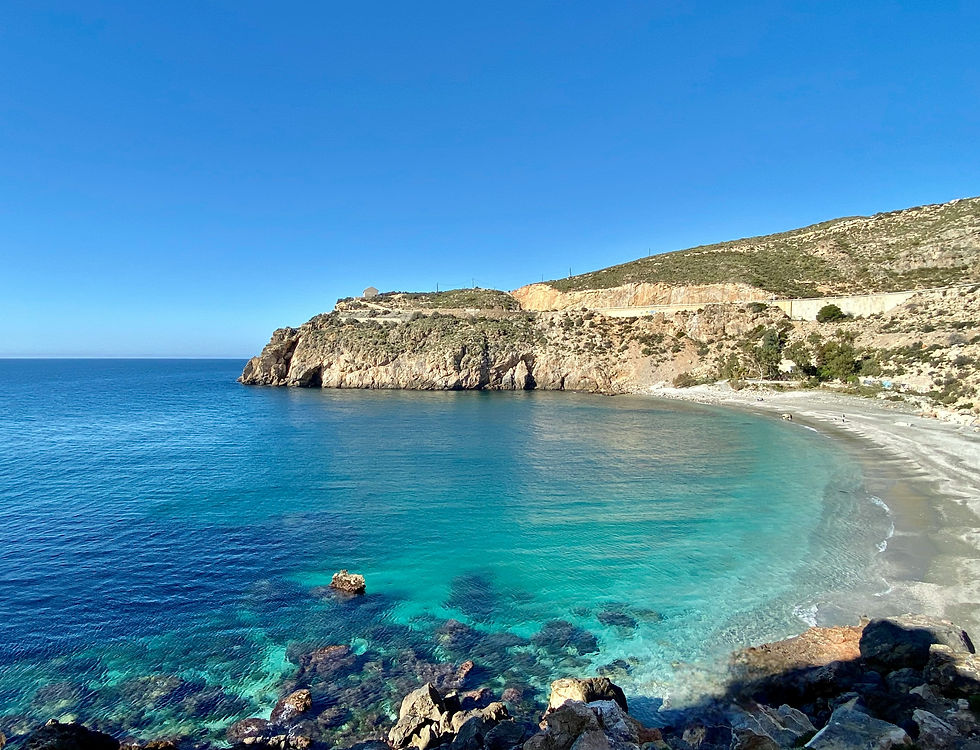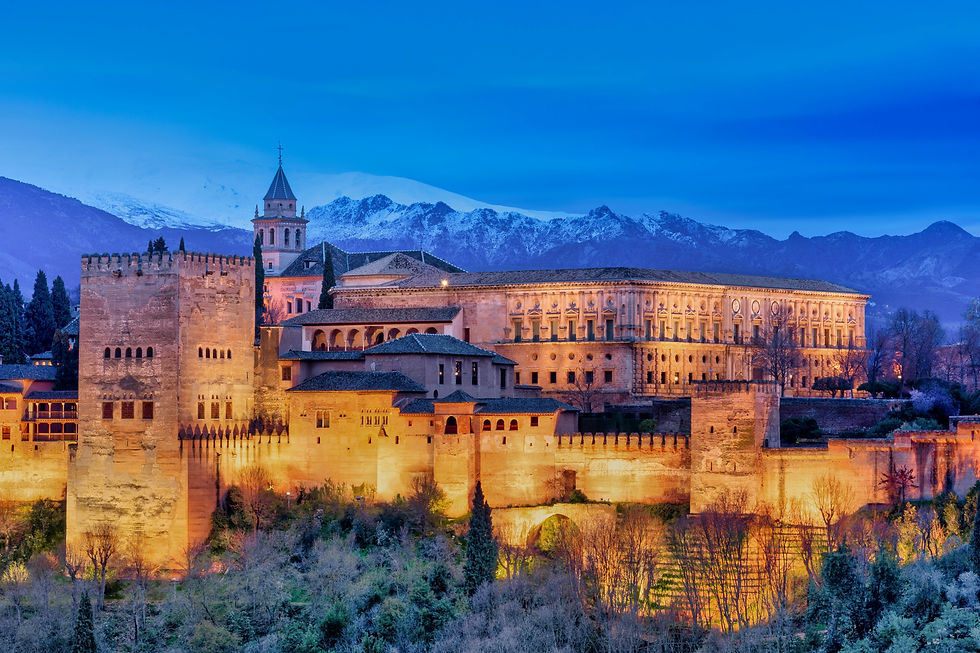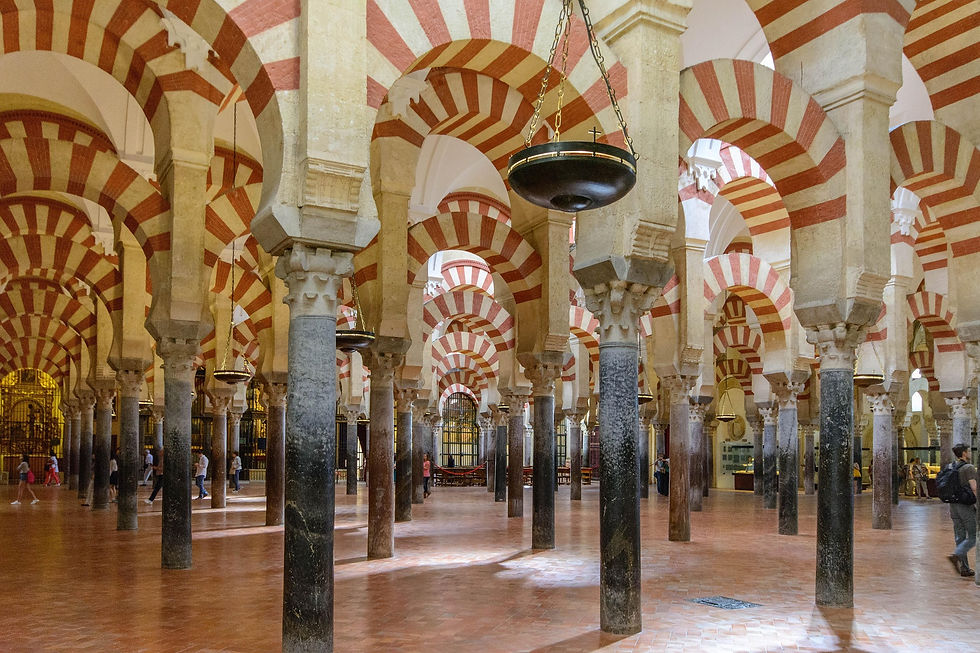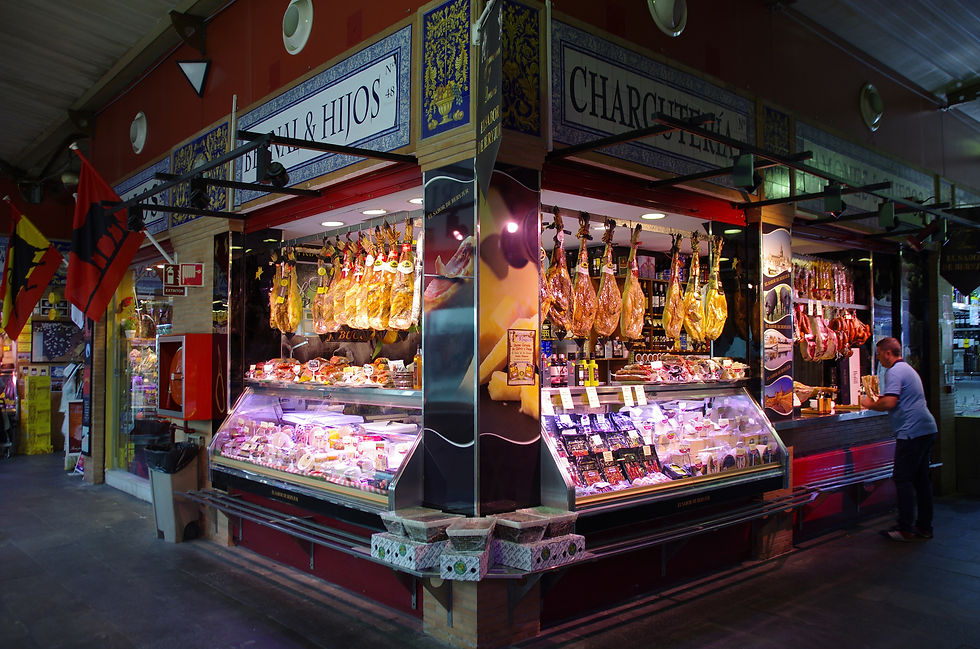Andalusia: A Journey through history, culture, and breathtaking nature
- Liesbeth Deschietere
- Feb 23
- 4 min read
Andalusia, the sunny south of Spain, is a region that has it all: stunning nature, rich history, art, and a culture rooted in various civilisations. From the enchanting streets of Seville to the awe-inspiring Alhambra in Granada, Andalusia is a destination that takes you on a journey through time and stimulates the senses.


A Dive into History
The history of Andalusia is a blend of various cultures that have influenced each other, particularly the Romans, Visigoths, Moors, and later the Christians. This makes the region unique, not only in Spain but in all of Europe.
The Roman and Visigothic Era
The Romans conquered Andalusia in the 2nd century BC, cities like Córdoba, Hispalis (now Seville), and Málaga. The city of Baelo Claudia, located on the Costa de la Luz, is an excellent example of Roman influence, with well-preserved ruins of an ancient city that was once a centre for the fishing and salt industry.
After the fall of the Roman Empire, Andalusia came under the rule of the Visigoths, a Germanic tribe, but this period did not last long. In the early 8th century, the Moors—Muslims from North Africa—arrived and ruled the region for more than 700 years.

Moorish Andalusia
The Moors left a lasting mark on Andalusian culture, with architectural wonders and scientific advancements that made the region one of the most progressive in Europe. The Alhambra in Granada is one of the most famous examples of Moorish architecture, featuring its stunning gardens, elegant courtyards, and intricate tilework.

Córdoba, at the height of Al-Andalus (the period of Islamic Spain), was the capital of one of the most important caliphates. The Mosque-Cathedral of Córdoba, now a cathedral, is one of the most impressive monuments of the Islamic world, known for its iconic arches and vast interior.

The Reconquista and Christian Andalusia
In 1492—the same year Christopher Columbus set out on his voyage—the last Moorish kingdom in Spain, the Kingdom of Granada, was conquered by the Catholic Monarchs, Ferdinand and Isabella. This event marked the end of Islamic rule in Spain and the beginning of Christian dominance in Andalusia. However, the influences of these diverse cultures remain visible throughout the region, from Moorish architecture to Andalusian cuisine.
The culture of Andalusia: passion, art, and festivities
Andalusia is the birthplace of flamenco, a passionate music and dance style that reflects the emotions and history of the region. In cities like Seville and Jerez de la Frontera, you can experience the rich flamenco culture in its purest form. In the picturesque White Villages (Pueblos Blancos), such as Ronda and Mijas, you can feel the echoes of ancient traditions that are still alive today.

One of Andalusia’s most significant festivals is the Feria de Abril in Seville, which attracts thousands of visitors every year. It is a spectacle of colourful dresses, horses, dance, music, and celebration. Seville itself is a city of contrasts: the Gothic Seville Cathedral, the largest in the world, stands beside the magnificent Alcázar, a royal palace with Moorish influences. Both monuments tell the story of the city's long history, from the Moorish era to the Christian period.


Nature and Landscapes: The Most Beautiful Corners of Andalusia
Andalusia is not only known for its cities but also for its breathtaking natural landscapes. The Sierra Nevada mountains offer a perfect contrast to the vast beaches of the Costa del Sol. Here, you can hike, ski, and enjoy stunning views of the region.
The Cabo de Gata-Níjar Natural Park on the east coast offers rugged rocky shores, peaceful coves, and a beauty quite different from the Mediterranean resorts further west. It is a paradise for nature lovers, with its unspoiled beaches and arid landscapes that exude a unique charm.
Andalusian cuisine: flavors of the south
Andalusian cuisine reflects the region’s diverse cultural influences. Try the famous jamón ibérico, Spain’s finest ham, often served as a tapa. Additionally, gazpacho (cold tomato soup) and salmorejo (a thicker version) are summer staples, while flamenquín and tortilla española are delicious meat and potato dishes typical of the region.
Another essential part of Andalusian culture is its wine. The province of Cádiz is famous for its sherry wines, which are highly praised worldwide for their quality.

Practical Travel Tips
Transport: If you want to explore the region at your own pace, renting a car is a great option.
Flights: Major Andalusian airports are in Seville, Málaga, Granada, and Córdoba, making it easy to book a flight to one of these cities.
Trains: The AVE high-speed train network connects major cities like Seville, Córdoba, and Málaga, making train travel a comfortable and fast way to move between cities. Be sure to book your tickets in advance for the best prices.
Climate: Andalusia has a Mediterranean climate, meaning summers can be very hot, especially inland. The best time to visit is March to May or September to November, when the weather is mild and pleasant—ideal for sightseeing and outdoor activities. In summer, temperatures in cities like Seville and Córdoba can reach 40°C (104°F) or higher, so be prepared for the heat.
Conclusion: an experience you will never forget
Andalusia is a region that leaves a deep impression on everyone who visits. It is a place where history is engraved in every stone, where culture takes you on a journey through centuries of influence and passion, and where nature continues to amaze with its beauty. Whether you wander through the narrow streets of Granada, watch a flamenco performance in Seville, or simply relax on the sunny beaches of the Costa del Sol, Andalusia will always stay in your memory.
If you are looking for a destination that combines history, culture, and adventure, Andalusia is the perfect choice.
_edited.png)











